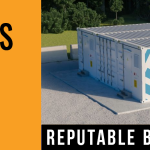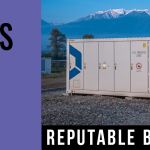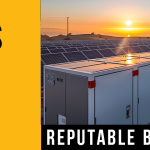 In much the same way that the industrial revolution changed society all those years ago, electrification is now the driving force behind the industrialisation of multiple sectors. From manufacturing to automotive, mobility to the introduction of technologies such as the Internet of Things, electrification is seen by many as the nucleus around which society is developing.
In much the same way that the industrial revolution changed society all those years ago, electrification is now the driving force behind the industrialisation of multiple sectors. From manufacturing to automotive, mobility to the introduction of technologies such as the Internet of Things, electrification is seen by many as the nucleus around which society is developing.
Similarly, an industry which has arguably seen the greatest change in recent years, is renewable energy. This is as a result of multiple factors; rising concerns surrounding global warming; new laws and regulations surrounding pollution and innovative technology which enhance the capabilities of clean energy. As we shift from fossil fuels to renewables, more and more of our everyday utilities are powered by electricity. Yet, the infrastructure and technology used to accommodate this demand is rarely discussed.
Even if renewable energy could provide a constant, stable source of energy, there’s still the question of how to ensure grid infrastructure is robust enough to deal with demand. There are a couple of routes which can be taken to combat these issues. We can generate more electricity and overfeed the grid so it is always capable of handling any spikes in consumption or we can incorporate energy storage systems within the grid to reserve energy during quiet periods to accommodate spikes in demand.
The (possible) solutions
Battery technology is becoming increasingly influential in catering for the demands of the national grid, with both flywheels and banks of batteries commonly deployed across the energy sector.
Touching upon flywheels first, these high inertia wheels generate power through utilising rotation at high revs (8000 Revs per minute, or more) and are kept in motion through the input of currents to ensure the select infrastructure is prepared for any surprise power surges. Although a downside to this method is the time required to not only implement such technology, but maintain it as regular maintenance is required every five years.
Banks of batteries, on the other hand, are commonly used to prevent blackouts, but due to their low power density they cannot deliver the necessary high powers jolts without sustaining damage. This means that a high volume of batteries are required to ensure the process is reliable, and on top of this, they also require regular maintenance throughout their lifecycle.

 Microgrids and energy storage are highly promising and frequently discussed topics in the energy community. Growing cybersecurity threats and frequent natural disasters that pose risk to the electric system have made microgrid solutions a desirable infrastructure improvement for customers and utilities.
Microgrids and energy storage are highly promising and frequently discussed topics in the energy community. Growing cybersecurity threats and frequent natural disasters that pose risk to the electric system have made microgrid solutions a desirable infrastructure improvement for customers and utilities. EnergySage released its latest semiannual Solar Marketplace Intel Report at Bloomberg’s Future of Energy Summit in New York. EnergySage’s report is based on millions of transaction-level data points generated within its Solar Marketplace, and serves as one of the country’s foremost leading indicators of the future of residential solar shopping.
EnergySage released its latest semiannual Solar Marketplace Intel Report at Bloomberg’s Future of Energy Summit in New York. EnergySage’s report is based on millions of transaction-level data points generated within its Solar Marketplace, and serves as one of the country’s foremost leading indicators of the future of residential solar shopping. An alliance announced in March could result in one of the most complete blockchain-based energy trading pilots to date — by adding batteries into the mix.
An alliance announced in March could result in one of the most complete blockchain-based energy trading pilots to date — by adding batteries into the mix. Spectacular falls in the cost of wind, solar and battery technology mean that clean energy is increasingly pushing coal and gas out of the world’s electricity generation mix in a “chilling” development for the future of fossil fuel power generation.
Spectacular falls in the cost of wind, solar and battery technology mean that clean energy is increasingly pushing coal and gas out of the world’s electricity generation mix in a “chilling” development for the future of fossil fuel power generation. Since 70 percent of the global demand for energy is met by burning
Since 70 percent of the global demand for energy is met by burning 



